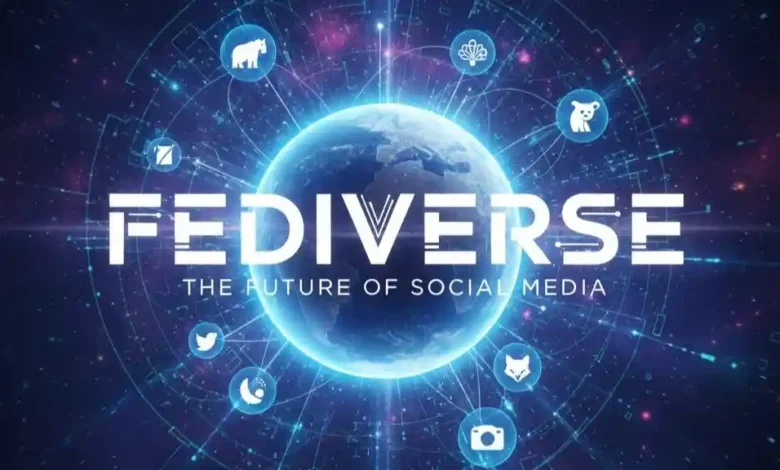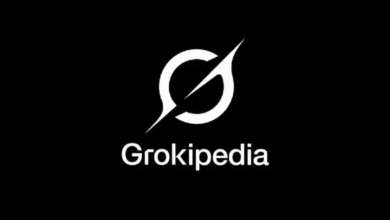How the Fediverse is Forging the Future of Social Media

For years, our digital social lives have been dictated by a handful of monolithic platforms – the “walled gardens” of Facebook, Twitter, Instagram, and TikTok. We’ve traded convenience for control, entrusting our data, conversations, and creative output to centralized entities. But a quiet revolution is brewing, one that promises to dismantle these digital enclosures and usher in an era of distributed, user-owned social networking: the Fediverse.
Imagine a universe of interconnected social platforms, each operating independently yet able to communicate seamlessly with one another. A place where you can follow someone on one platform, and they can respond from another, all without ever leaving your preferred interface. This isn’t a futuristic fantasy; it’s the Fediverse, and it’s already here, poised to reshape how we connect online.
What Exactly is the Fediverse?
The term “Fediverse” is a portmanteau of “federation” and “universe.” At its core, it’s a collection of independently hosted, interoperable servers (known as “instances”) running various social media software. These instances communicate using open, standardized protocols, most notably ActivityPub.
Think of it like email: you can have a Gmail account and send an email to someone with an Outlook account, and vice versa. The underlying protocol (SMTP) makes this possible, even though the providers are different. The Fediverse applies this same principle to social media, allowing users across different platforms to follow, interact, and share content with each other.

The Power of Decentralization: Why the Fediverse Matters
The Fediverse offers a compelling alternative to traditional social media for several critical reasons:
- User Control and Data Ownership: In the Fediverse, you choose your instance. You’re not beholden to a single corporation’s ever-changing terms of service or privacy policies. Your data resides on the instance you select, giving you greater control over your digital footprint.
- Censorship Resistance and Content Moderation: Each instance in the Fediverse has its own moderation policies, determined by its administrators and community. If you disagree with an instance’s rules, you can simply move to another, or even start your own. This distributed model makes it incredibly difficult for any single entity to impose widespread censorship.
- Diversity and Niche Communities: Without the pressure to cater to a lowest common denominator, Fediverse instances can be tailored to specific interests, communities, or even languages. This fosters a rich tapestry of online spaces, allowing users to find truly relevant and welcoming environments.
- Open Standards and Innovation: Because the Fediverse is built on open protocols, anyone can develop new software or features that integrate with it. This encourages innovation and prevents vendor lock-in, leading to a more dynamic and evolving social media landscape.
- No Algorithms, No Ads (Mostly): Many Fediverse platforms prioritize chronological feeds and user-driven content discovery over manipulative algorithms designed to maximize engagement for advertising revenue. This results in a more authentic and less anxiety-inducing social experience.
Shaping the Future: How the Fediverse Will Transform Social Media
The rise of the Fediverse signals a fundamental shift in our expectations for online interaction. Here’s how it’s poised to shape the future:
- A More Resilient and Robust Internet: By distributing social networking across countless instances, the Fediverse makes the overall system more resilient to outages, attacks, and corporate failures.
- Empowering the Creator Economy: Creators will have more direct relationships with their audience, free from platform gatekeepers and exorbitant fees. The ability to host your own content and connect across platforms opens up new monetization possibilities.
- Reclaiming Digital Public Squares: The Fediverse fosters truly public digital spaces, where conversations aren’t dictated by profit motives but by community values.
- Interoperability as the New Standard: As the Fediverse grows, the expectation for social platforms to communicate with each other will become mainstream. This could push even traditional platforms to consider adopting open protocols.
- A Return to Genuine Connection: Without the constant algorithmic nudges and commercial pressures, the Fediverse can foster more meaningful interactions and a stronger sense of community.
Major Social Media Platforms Supporting the Fediverse
While the Fediverse is a broad ecosystem, several key platforms are leading the charge, primarily utilizing the ActivityPub protocol:
- Mastodon: Often considered the flagship of the Fediverse, Mastodon is a microblogging platform similar to Twitter. It allows users to post short messages (“toots”), follow others, and engage in conversations. Its decentralized nature and emphasis on user control made it a popular alternative during recent disruptions on Twitter.
- Lemmy: A decentralized link aggregator and forum, Lemmy is often likened to Reddit. Users can create and subscribe to communities (“communities”), share links, and engage in discussions, all while benefiting from the Fediverse’s interoperability.
- PeerTube: A decentralized video hosting platform, PeerTube offers an alternative to YouTube. It uses a peer-to-peer system to reduce server load, allowing anyone to host their own video channel and federate with others.
- Friendica: This versatile platform functions as a social network, blogging platform, and even a contact manager. It offers extensive interoperability, connecting not only with other Fediverse platforms but also with some traditional social networks.
- Pixelfed: An image-sharing platform reminiscent of Instagram, Pixelfed allows users to share photos and follow others within the Fediverse, offering a privacy-focused and ad-free visual experience.
- Threads: The newest social media platform from Meta also has support for the Fediverse.
Beyond these, a myriad of other platforms like Misskey, Pleroma, WriteFreely (blogging), and Funkwhale (audio streaming) contribute to the rich and diverse Fediverse ecosystem, each bringing its own flavor of federated social interaction.
The Road Ahead: Challenges and Opportunities
While the Fediverse holds immense promise, it’s not without its challenges. The learning curve for new users can be steeper than with centralized platforms, and the discoverability of instances and communities is an ongoing area of development. However, as more users and developers embrace the vision of a decentralized internet, these hurdles are rapidly being addressed.
The Fediverse represents more than just a new way to do social media; it’s a movement towards a more open, equitable, and user-centric internet. As the digital landscape continues to evolve, the principles of federation and decentralization will undoubtedly play a pivotal role in shaping how we connect, communicate, and build communities online. Are you ready to step beyond the walls and explore the universe of possibilities?
For more Odinozz Tech articles, click here.
Follow Odinozz on social media. Click here.



